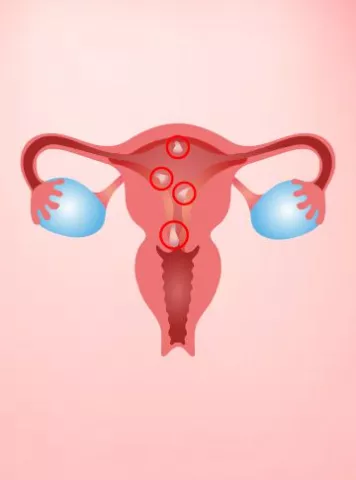What is C section?
The Cesarean section, also known as C-section birth, is a surgical procedure in which an incision is made in the abdomen of the mother slicing through the skin, muscles and uterus to reach the amniotic sac from where the baby is pulled out.
Alarmingly, the number of cesarean section births has increased greatly in the past few decades.
When is C section birth recommended?
In general, doctors opt for C section birth when conditions are not favorable for the mother or the child for a natural delivery.
Cesarean section can also be scheduled or performed on an emergency basis. The indications are not the same in these two situations.
What is C section in detail?
In less than half of the cases, the cesarean section is scheduled in advance (it is performed before the natural onset of labor). The reasons include –
• Abnormal presentation of the child (transverse or breech presentation)
• Abnormal location of the placenta (placenta previa)
• Multiple pregnancy
• Child of very high weight (macrosome i.e. more than 4.5 kg)
• Problems during pregnancy (maternal preeclampsia, delayed growth of the child)
• History of cesarean section for a previous pregnancy (although a vaginal birth is possible in most cases)
• Infection of the mother with certain viruses such as HIV (the cesarean section does not infect the baby)
• Certain obstetric history (uterine rupture, complicated shoulder dystocia, complicated uterine scars, etc.)
• Mother’s decision for reasons of convenience (some doctors accept it, although mother’s request should not be considered an indication)
Cesarean section can also be performed urgently, during pregnancy or when the delivery does not go as planned, and vaginal labor becomes impossible or too risky for the mother and / or child:
• Abnormalities in the child’s heartbeat (fetal distress)
• Cervical dilation stopped despite medications
• Hypoxia (= lack of oxygen) of mother or child
• Failed forceps extraction
• Maternal haemorrhages (placenta detachment, suspicion of uterine rupture, etc.)
• Risk of serious pelvic floor lesions with involvement of the urethral and anal sphincters, etc.
• Preeclampsia attack, a disease that can occur during pregnancy and can cause severe hypertension.
The intervention
Cesarean section is performed under anesthesia, most often loco-regional (epidural anesthesia) and more rarely under general anesthesia.
It consists of incising the abdominal wall and the uterus (= hysterotomy ) in order to extract the baby and the placenta
The incision is made horizontally just above the pubic hair and the child is withdrawn through this opening. In some cases, an instrumental aid (forceps, suction cup) is necessary to get the baby out.
The patient will be asked about the below mentioned things before the operation:
• to remove jewellery and all traces of nail polish
• to shave the pubis (can be done by the medical team)
• to take a shower (with an iodized antiseptic)
• put on an outfit for the boulder
Once in the operating room, an infusion and a urinary catheter are placed and anesthesia is performed.
A sterile drape (sheet) is installed so that the woman cannot see the operation.
Depending on the medical team and the circumstances (emergency or not), the father or the accompanying person may be present in the operating room.
After the baby is extracted, the incision is sutured (or stapled) and the mother is placed under surveillance for about 2 hours to make sure there are no complications.
The urinary catheter and intravenous infusion are usually left in place for a few hours
In some cases, it is possible for her to keep her baby with her, skin to skin, but more often, in most maternity hospitals, the baby is not given to her immediately.
Risks and complications of cesarean section
Like any surgical procedure, a cesarean section can involve risks.
The urinary catheter can cause minor urinary tract infections in the days following the operation (the most common complication).
Inflammatory reactions or a hematoma in the scar can sometimes appear. More rarely, bowel obstruction, severe bleeding or infection of the uterus may occur. There is also a very low risk of phlebitis (= blood clot in a vein) or pulmonary embolism. Anticoagulant injections are usually given to prevent this.
Usually, discharge from the maternity hospital takes place 4-7 days after the childbirth. It is normal to feel pain and tightness in the scar: analgesic drugs may be prescribed for a few days.
But there is nothing to stress about. You should know that after a first cesarean section, it is often possible to give birth vaginally during subsequent pregnancies. This should be discussed with your doctor, depending on the indications for the cesarean section and the progress of the pregnancy. To know more about what is C-section and related issues, visit Indira IVF and get the right information & treatment.
Articles
2023


World AIDS Vaccine Day 2023: Can HIV & AIDS affect fertility or your infant’s health?
World AIDS Vaccine Day is observed every year on the 18th of May to create awa...
2023


Male Infertility Infertility Tips
Hyperspermia: Causes, Symptoms, Diagnosis & Treatment
What is Hyperspermia? Hyperspermia is a condition where an individual produ...


Guide to infertility treatments Infertility Tips
पीआईडी: पेल्विक इनफ्लैमेटरी डिजीज और निःसंतानता
पीआईडी - पेल्विक इनफ्लैमेटरी �...
2022


Infertility Tips Uterine Fibroids
Endometrial Polyps (Uterine Polyps)
What are Endometrial Polyps (Uterine Polyps)? Endometrial polyps, often ref...
2022


Female Infertility Infertility Tips
Why do You Need Fertility Treatment
As we all know infertility rate is constantly rising in our society day by day...
2022


Cesarean Section Vs Natural Birth
Surrogacy centers in Delhi and Infertility centers in Pune state that there ar...
2022


ನಿಮಗೆ ಹುಟ್ಟಲಿರುವ ಮಗುವನ್ನು ಅರ್ಥಮಾಡಿಕೊಳ್ಳುವುದು: ಗರ್ಭದಲ್ಲಿ ಮಗು ಹೇಗೆ ಬೆಳೆಯುತ್ತದೆ!
ವೀರ್ಯವು ಮೊಟ್ಟೆಯನ್ನು ಭೇಟಿಮಾಡ�...
2022


Diet Chart for Pregnant Women: The Right Food for Moms-To-Be
Pregnancy Food Chart 1. The daily diet must include the right amount of pro...
2022


Can i become pregnant while my tubes are tied?
Pregnancy is one of the most important phases in women’s life and is conside...
Pregnancy Calculator Tools for Confident and Stress-Free Pregnancy Planning
Get quick understanding of your fertility cycle and accordingly make a schedule to track it















